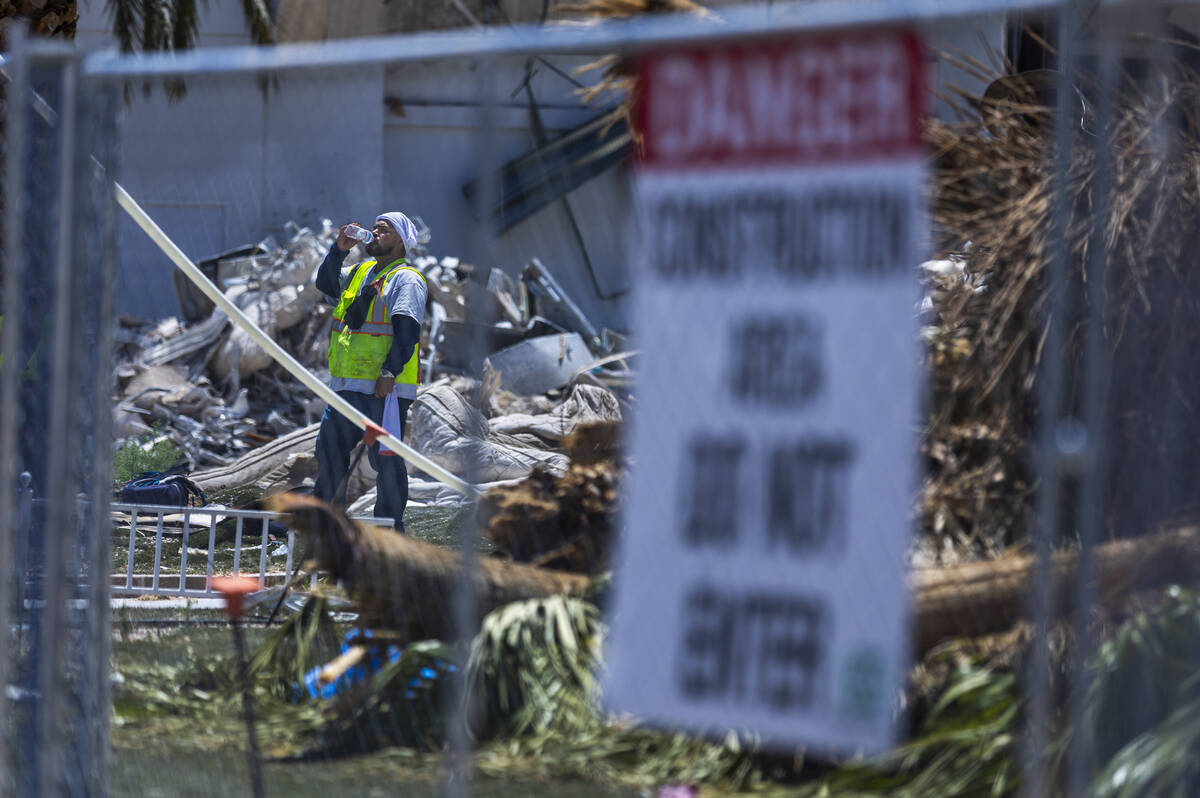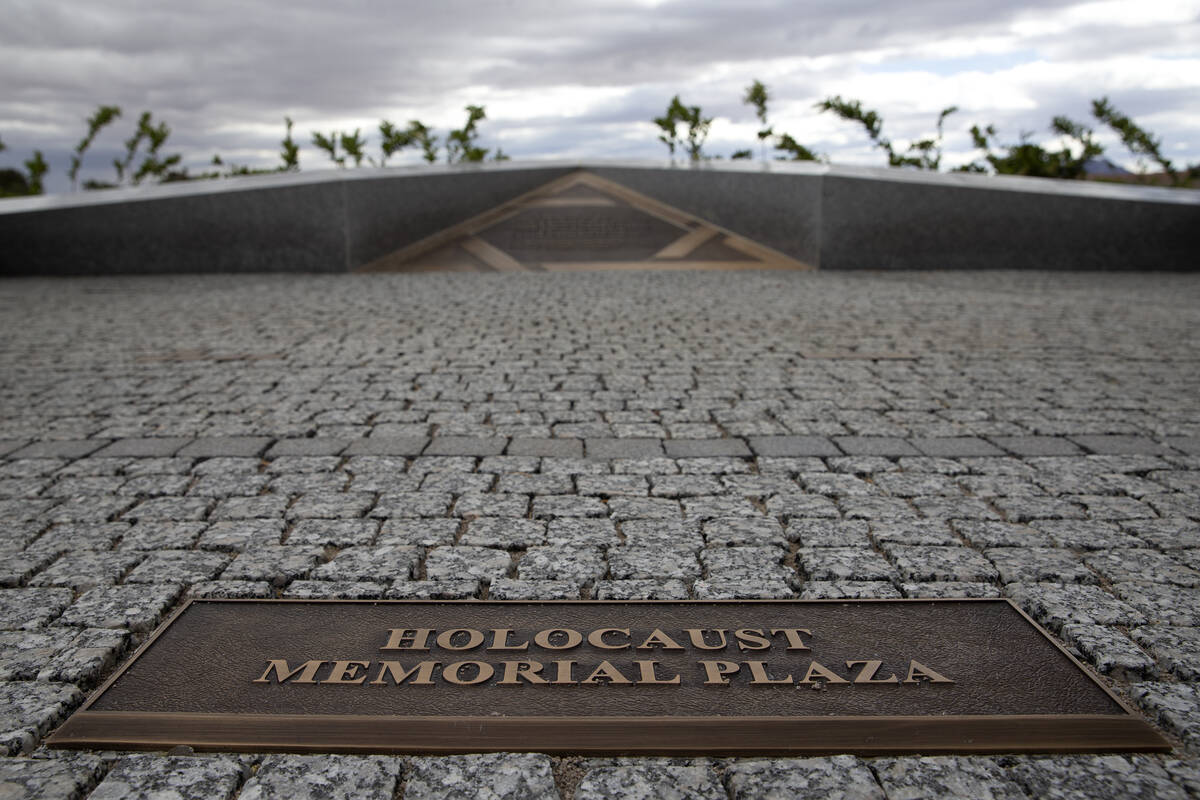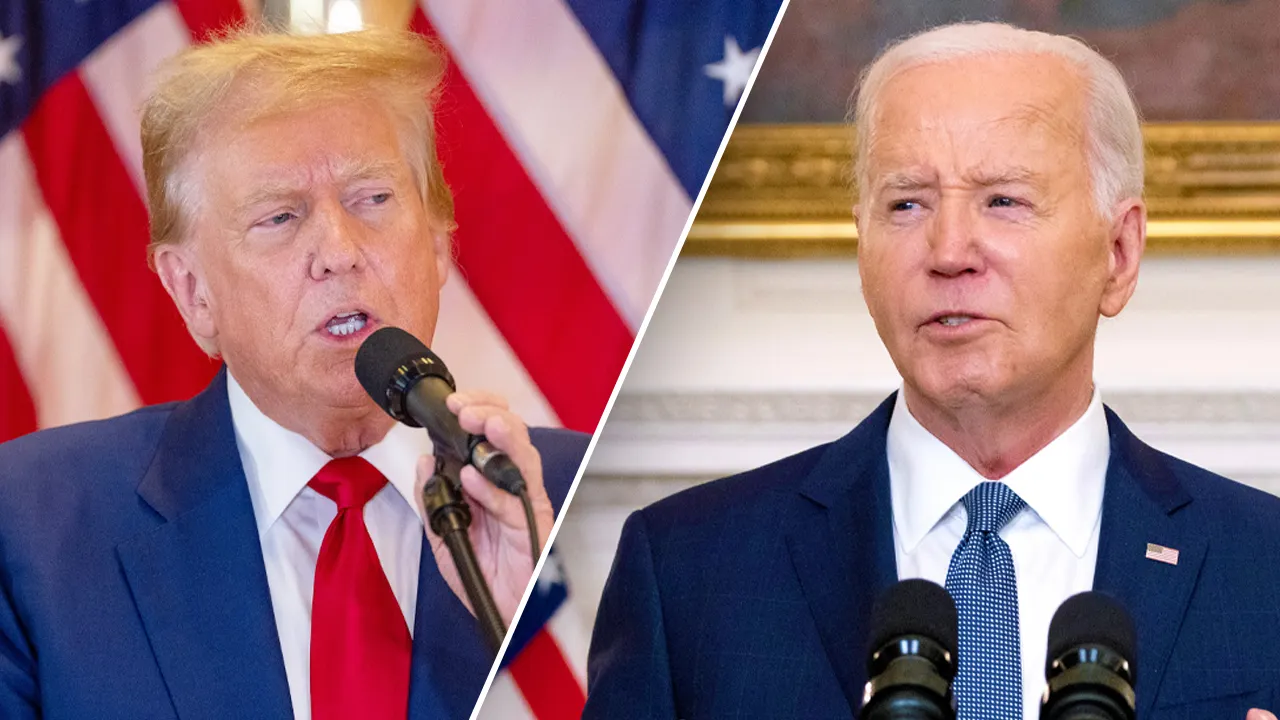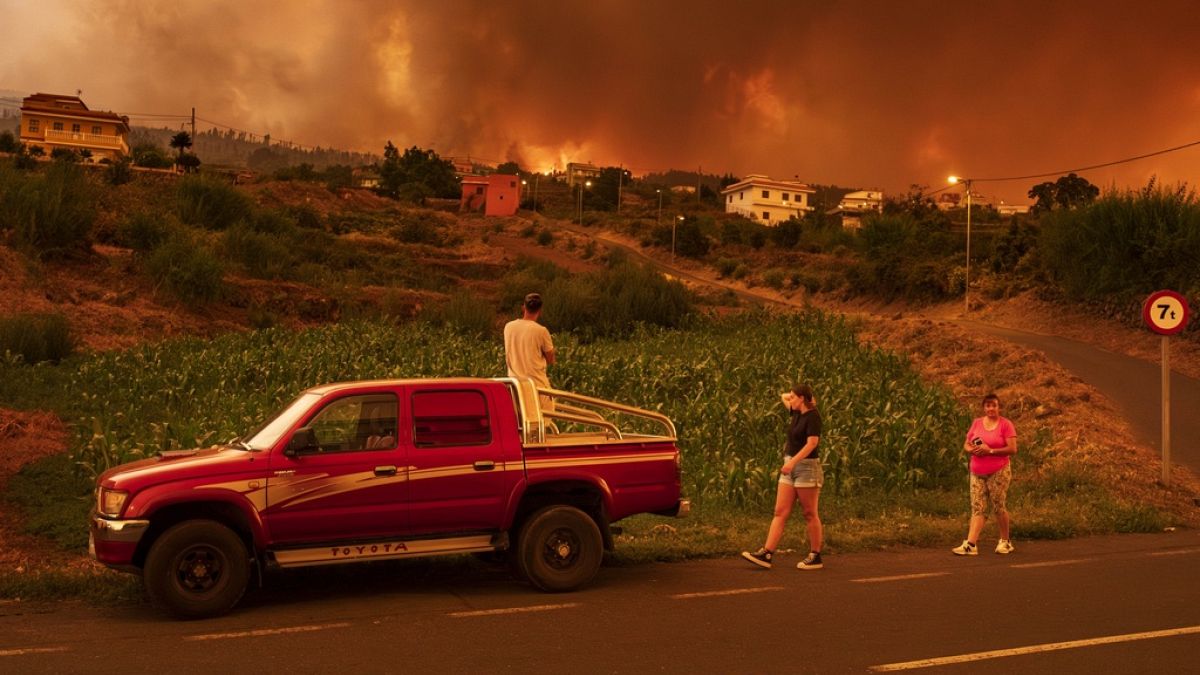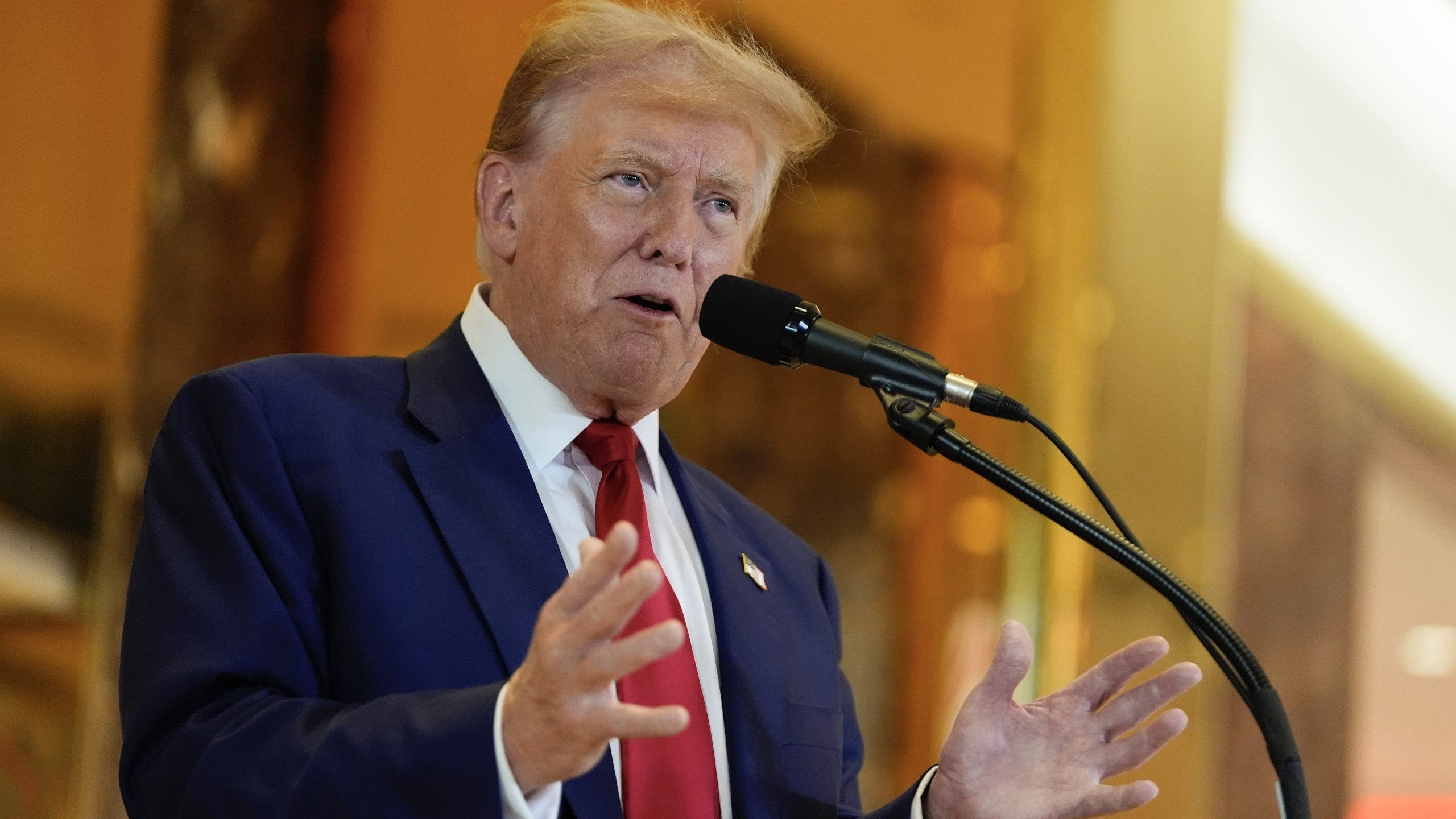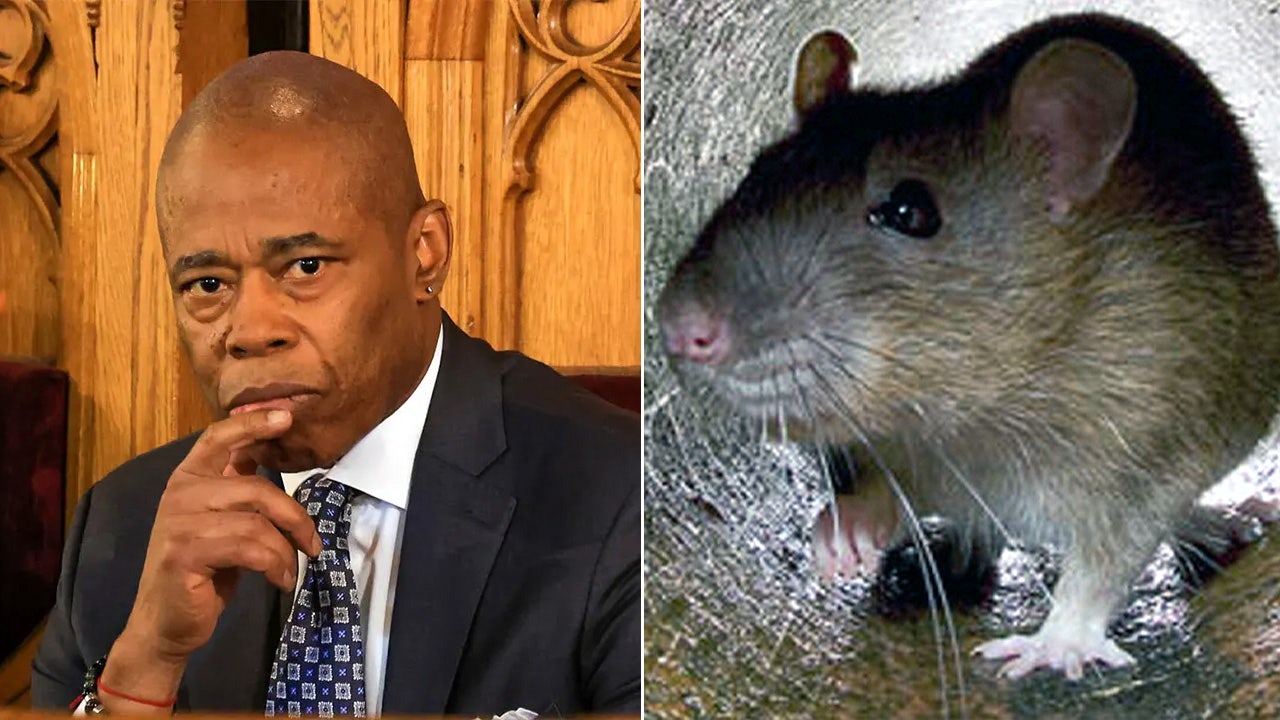Steve Marcus
Clark County Commissioner Michael Naft speaks during a news conference and airport tour at the Henderson Executive Airport in Henderson Friday, May 31, 2024. Congresswoman Dina Titus, D-Nev., listens at left. Officials discussed a $9 million renovation and improvement project for the airport.
Saturday, June 1, 2024 | 2 a.m.
Aviation officials in Las Vegas are praising the passage of a congressional bill that will provide funding for improvement projects at multiple airports in Southern Nevada.
The FAA Reauthorization Act of 2024, signed by President Joe Biden in May and developed in part by U.S. Rep. Dina Titus, D-Nev., allocates federal funds to a major renovation of Henderson Executive Airport, ultimately financing a third of the $9 million project.
“More than anything, it is a reliever airport for Harry Reid International Airport,” said Rosemary Vassiliadis, director of the Clark County Department of Aviation. “That is so important to us. Clark County owns and operates the five airports here in Southern Nevada, and we manage them as a system. This airport is a major piece of that system so that we could keep on enticing general aviation operations off of Harry Reid into a beautiful facility like this, and it becomes a win-win continuously.”
The terminal building of the south central valley facility — which has not undergone a renovation of this size since it was built nearly two decades ago, officials said — needs to stay improved and offer certain amenities in order to compete in the general-aviation field, Vassiliadis said.
“You saw the numbers in the Super Bowl, you saw the numbers of (Formula One) — F1 is coming back — we will continue having large, mega events here in Clark County and we will be prepared for that,” she said, flanked by renderings of the renovation that show a modernized, more spacious lobby, an elevated white and silver color scheme and more.
Clark County Commissioner Michael Naft noted the facility’s importance to the economy, pointing to $35 million in output from the National Business Aviation Association hosting its convention in Las Vegas as an example. Because of federal assistance, he said, that show will return on an annual basis.
The bill includes a 20% increase in the Airport Improvement Program, which will impact projects not only at Henderson Executive, but also at Harry Reid International and the Boulder City Municipal Airport, Titus’ office said.
“To put that into terms of what exactly that means for us … it puts us truly in a position to compete with so many airports across the country — frankly, who are fighting tooth and nail to get general aviation into their system,” Naft said.
When general aviation moves out of Harry Reid and to a facility like Henderson Executive, he said, it increases the capacity at the former for commercial flights and commercial passengers.
The bill specifically dedicates $2.2 million toward expanding the kitchen facilities at the Henderson airport, which will help it compete with other base facilities, Naft added.
He thanked Titus for her continued support of the facility in the House. Titus is a senior member of the House Aviation Subcommittee.
“Whether it’s through the property tax that comes in through the facility, through the 207 airports that call Henderson Executive homebase — all of whom are paying taxes here in this community that are going toward the schools in our community, that are going towards the roads and the infrastructure — that is incredibly important,” he said. “In addition to using this airport and our airport system as a tool for economic development and diversification of our economy, all of which is incredibly important.”
Aviation is a huge part of how people get to and around Las Vegas, Titus said Friday, and Henderson Executive plays a critical role in the increasingly important market of general aviation.
As events like, potentially, another Super Bowl, the relocation of the Oakland Athletics to Las Vegas, the Olympics in neighboring California later this decade and more continue to impact visitation to Southern Nevada, the Henderson facility will only play a bigger role, she said.
“It was already a great facility,” said Titus, who emphasized that the FAA reauthorization was a bipartisan effort, on the renovation of Henderson Executive. “And now I think it’s going to be even bigger and better and more accommodating.”
Vassiliadis was unable to give a timeline for the renovation Friday, saying the airport will need to receive the money from the FAA before assessing the design and so on.
There’s a real commitment from the FAA to get the money “out the door,” Titus added, noting that the U.S. Department of Transportation prioritizes moving money efficiently, cooperation among all levels of government and equity.
“So it doesn’t just benefit certain communities, or certain affluent folks, but it’s spread out among all communities,” she said. “And that’s what you see in the FAA, as well as in other transportation fields.”
The bill also includes provisions regarding the use of drones, and expanded rights for travelers with disabilities, Titus said. It calls for better training of airport workers to handle wheelchairs and other assistive devices, for the FAA to conduct efficient and thorough investigation of complaints and more, she said.
“For our disabled travelers, whether they’re coming here for a conference which is building back up since COVID, or they’re coming here as a tourist — we want everybody’s experience to begin the day they walk out the door and be a pleasant one,” she said. “And we have had a disabled community wanting to travel, but not having such good experiences.”
Titus toured Henderson Executive Airport on Friday to see where specific improvements would be made and learn how the facility operates.
Among other changes, the renovation would include a partition to separate dispatch workers from those in customer service, new flooring in the airport restaurant and a thorough upgrade to the pilot’s lounge, which Titus took a moment on Friday to proudly tell some pilots who were eating in the lobby about.
The renovation will create a luxury feel like what passengers could find in some of the nicest resorts in Las Vegas, officials said in the Henderson Executive lobby on Friday, where passengers towed suitcases past, watched planes take off on the expansive tarmac through a near floor-to-ceiling window or were escorted to their aircraft.
“It’s not just a pretty project,” Vassiliadis said. “We’re not just improving and upgrading … the entire terminal, just because. We are doing it to stay in competition with what the major goal is — and, again, the major goal is to attract and entice the smaller aircraft, unscheduled general aviation aircraft, off of Harry Reid International and onto a beautiful facility like this.”
[email protected] / 702-990-8926 / @_katieann13_









